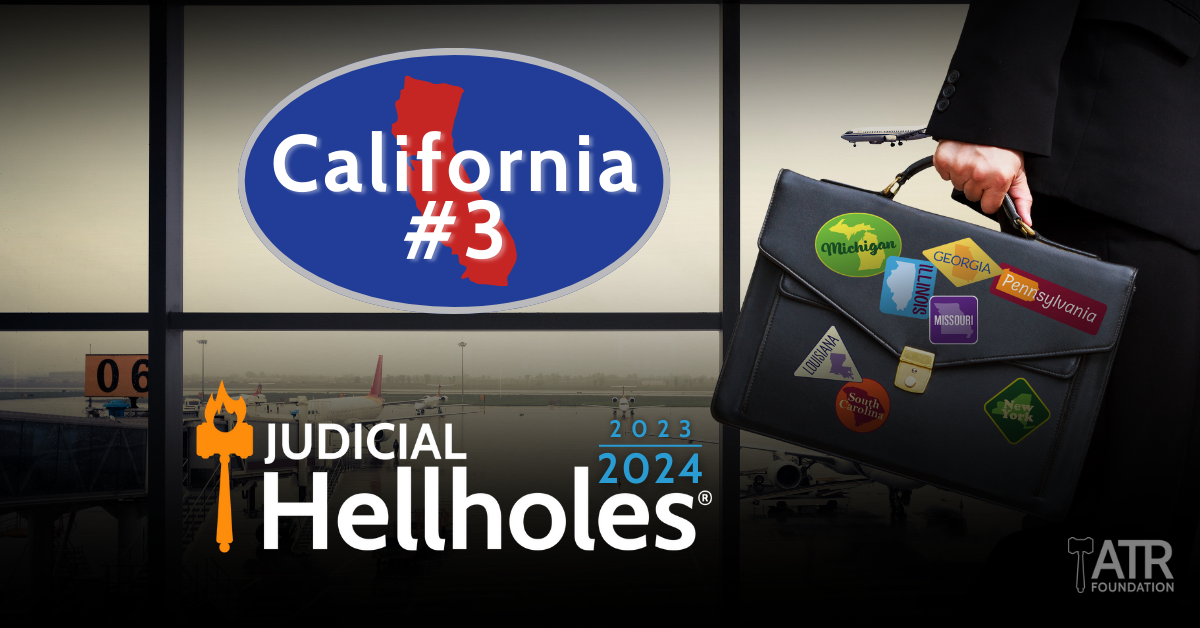California’s Innovative New Way to Sue
A California Appellate Court recently adopted a new theory of liability that even by California’s own standards is crazy.
In Gilead Tenofovir Cases, Gilead Sciences v. Superior Court of the City and County of San Francisco, the California Court of Appeal created a new duty to innovate. It significantly expanded product liability finding that even if a product is not defective or unreasonably dangerous, a company can be held liable if it was researching and developing another product that it “knew” was “safer” and did not release it fast enough.
The Wall Street Journal pointed out that this theory could be used against any manufacturer, not just those that make prescription drugs: “Software, phone, car and medical-device manufacturers—the universe of potential defendants is endless.”
A perennial Judicial Hellhole®, California’s courts are a breeding ground for novel legal theories. The latest ruling is just another notch in the state’s belt, reinforcing its reputation as a laboratory for plaintiff lawyers. Recently, Los Angeles County became the first municipality to file consumer protection litigation against Johnson & Johnson regarding its talcum powder. Meanwhile, the state is ground zero for localities’ novel climate change litigation, greenlighted by the courts, setting the stage for legal battles that may impact the entire nation.
The financial burden of this plaintiff-friendly legal system is staggering — every Californian pays a $2,120 annual “tort tax”. In the Bay Area, where the Gilead case originated, the tort tax skyrockets is even higher — a whopping $5,888 per year. Additionally, Californians lose out on more than 787,000 jobs annually due to excessive tort costs.
The state’s courts consistently serve as a launching pad for legal theories that, if successful, are exported across the country. As California goes, unfortunately, so goes the nation in terms of legal trends.







